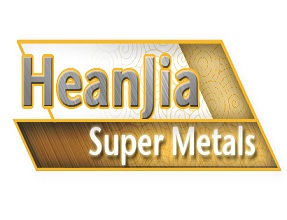You are here: home > Latest Buzz > High Fatigue Character of Inconel Alloys
Product (738)
- Pure Nickel Products (38)
- Incoloy Products (74)
- Inconel Products (72)
-
FeCrAl Product
(99)

-
Nichrome Products
(68)

- Monel Products (36)
- Hastelloy Products (49)
- Nickel Iron Alloy Product (59)
-
Nickel Copper alloys
(47)

- Nonferrous Metal Product (27)
-
Resistance Wire
(90)

- Stainless Steel Product (42)
- Mesh Demister (20)
- Others (17)
Product Forms (14)
Quality Certificate (11)
Learning Gallery (30)
Incoloy News (9)
Inconel News (22)
Molybdenum News (7)
Nikrothal News (4)
Nichrome News (13)
Titanium News (2)
Nickel News (8)
Alloys House (30)
Tools (27)
Nickel alloy News (30)
Latest Buzz (30)
nickel chrome copper iron alloys news (28)
Credit Report
Products Index
Company Info
Heanjia Super-metals Co., Ltd. [China (Mainland)]
Business Type:Manufacturer, Trading Company
City: Beijing
Province/State: Beijing
Country/Region: China (Mainland)
Latest Buzz
High Fatigue Character of Inconel Alloys
The alloys strips used in the aeronautical engineering are usually offer low fatigue and thermal fatigue performance. The prime components that experience the low fatigue problem in the aircrafts are combustor, exhaust device, thrust, proburner equipped in the gas turbines. To overcome the fatigue issues an alloy Inconel 625 is utilized in such equipments.
The engine manufacturers choose large value of latitude in the restricted specifications to emphasize the Inconel¡¯s performance within the specific constraints. Different manufacturing techniques include the direct emphasize on the basic features of wrought alloys that enhance the alloy¡¯s low cycle fatigue (LCF) and thermal fatigue (TF) properties. The chief processing steps include melting, extreme control of specific elements of alloy and annealing eventually.
The above methods precisely manipulate the grain size, insertion kinds and magnitude and the mechanical features imperatively. Balance between such features extremely enhances the LCF and TF nature of traditional nickel alloys. Today, we will discuss about Inconel 625, an organized combination of various key production options to enhance the mechanical nature, types of elements included and count, and finally the grain size. These properties provide LCF at high temperature of 538°C to 593°C. The production variables are closely related with the life span of thermal fatigue.
Inconel alloy constitutes of different percentages of valuable metals like Chromium, Molybdenum, Niobium, Copper, Iron, Silicon, Manganese, Aluminum, Titanium, Carbon and balanced Nickel offers effective advantage in the aircraft applications with its highly sturdy and tough character for the large range of temperature varying up to 1095°C. Inconel alloy obtains firm character from Molybdenum and Niobium when aging at 593°C. The high temperature tolerant character of Inconel is an advantage and if it is more optimized it offers exclusive fatigue strength.
Process
After the traditional heating method and remelting of slag, Inconel 625 is chosen for an enhancement. The LCF properties are studied under stress controlled tension environments. With additional heating the annealing temperature can be decreased thus decreasing the grain size as well as improving the yield capacity at the room temperature. As a result of this the melting process is turned to vacuum melting process as well as ESR. Inconel strip is tested to imparting the Low cycle fatigue properties. Different heat treatments are provided at different melting practices using various compositions of carbon, silicon and nitrogen which also results in the variable annealing practice at different heats.
Inconel is highly capable to use in the Gas turbine blades, seals and combustors, large temperature clasps, heat exchanger and steam collection generators in the nuclear power plants. This alloy also offers advantage in the sound suppressors used to design for machine gun. Initially Inconel was also chosen for different gas tanks in the Apollo space shuttles. Inconel alloys are also employed in the cryogenic storage tank and exhaust systems for racing cars. It is highly used in the form of recording medium in the airplanes, chemical processes and pressure containers. Inconel is widely chosen for using in the boilers.
Pre Page:
Is Tungsten Carbide a Health Friendly...
Next Page:
How Inconel is worthy in Gas Turbines...
.gif)


